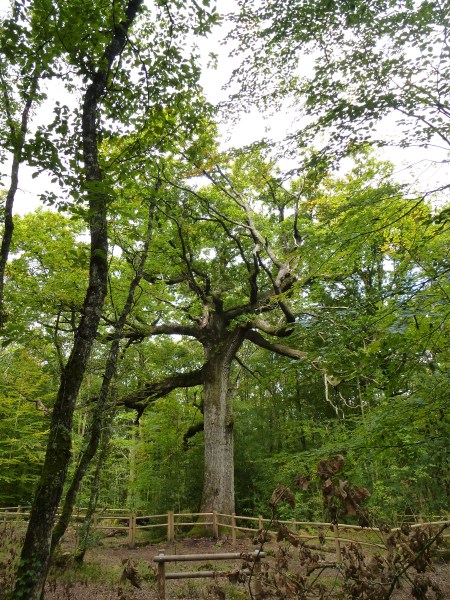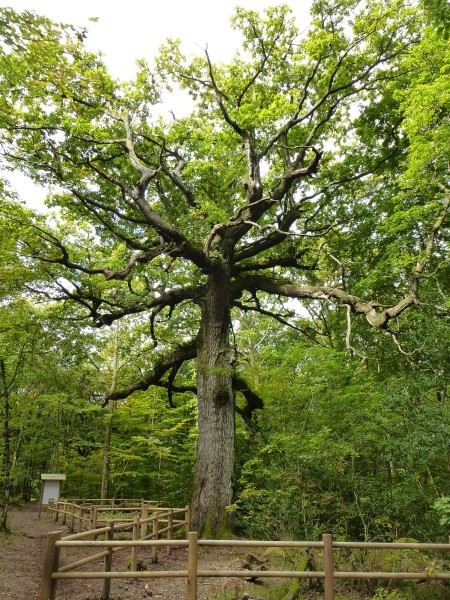The forest of Brocéliande is filled with magical places – standing stones, prehistoric tombs and miraculous fountains, many of them associated with Arthurian legend. It is also home to some natural magic in the form of several ancient trees. A while back I visited the incredible Chêne de Guillotin, and this time round I went to take a look at its younger but no less magical neighbour, the Chêne des Hindrés.
Unlike the Chêne de Guillotin, which sits on the edge of the forest in a pretty meadow, the Chêne des Hindrés lies hidden deep in the forest, around a kilometre from the nearest car park. A “Chêne” is an oak, and apparently “Hindrés” means damp, wet places, although I couldn’t see any signs of swampiness when I visited. The route to the tree is well-signposted and follows a clear path through the historic woodland.

The ancient Chêne des Hindrés, Brittany
Even in this dense forest, the Chêne des Hindrés itself, with its monumental trunk and huge mass of snaking branches, is hard to miss. Apparently the tree is around five hundred years old, which is not hard to believe – it really is enormous! I particulary liked the fact that other, small plants had made their home on the oak’s massive branches, with small ferns sprouting from its broad boughs.

The huge snaking boughs of the Chêne des Hindrés, Brittany
The Chêne des Hindrés reminded me of the Ents, those living, breathing and walking trees that feature in Tolkein’s Lord of the Rings, or even Enid Blyton’s charming Faraway Tree. Given its location, it is hardly suprising that the tree has also been associated with legend, and is sometimes referred to as the Chêne des Druides, or the Druid Oak. Supposedly Druidic ceremonies have been held here over the centuries, which makes sense – I can’t think of a better spot for invoking natural magic than this otherwordly place, the ancient heart of a mystical enchanted forest.


































